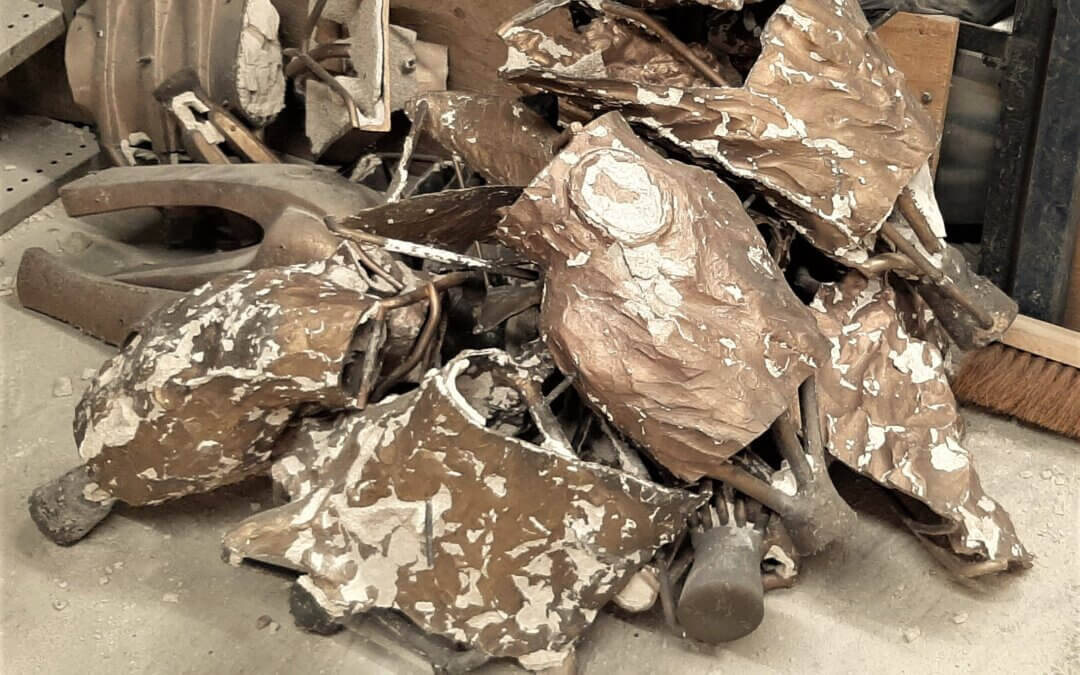
Speak to us of Freedom – Knockout, Fettling, Cleaning & Linishing
The Gibran Sculpture Series
In the last post, you saw the castings being poured. There’s something really quite primeval about the process I feel, with intense, raw heat and red hot molten metal. Anyway, once the whole thing has cooled, the castings, still in their moulds are removed from the casting box. If the castings were coarse and with a crude finish, they would simply be ‘knocked out’ of their crude sand moulds, but these are fine art castings and the surface is all important.
So, now they are cool, the castings are removed from the box in their moulds. The plaster moulds are carefully knocked off the castings by hand. So the castings, at this stage, end up looking like this…
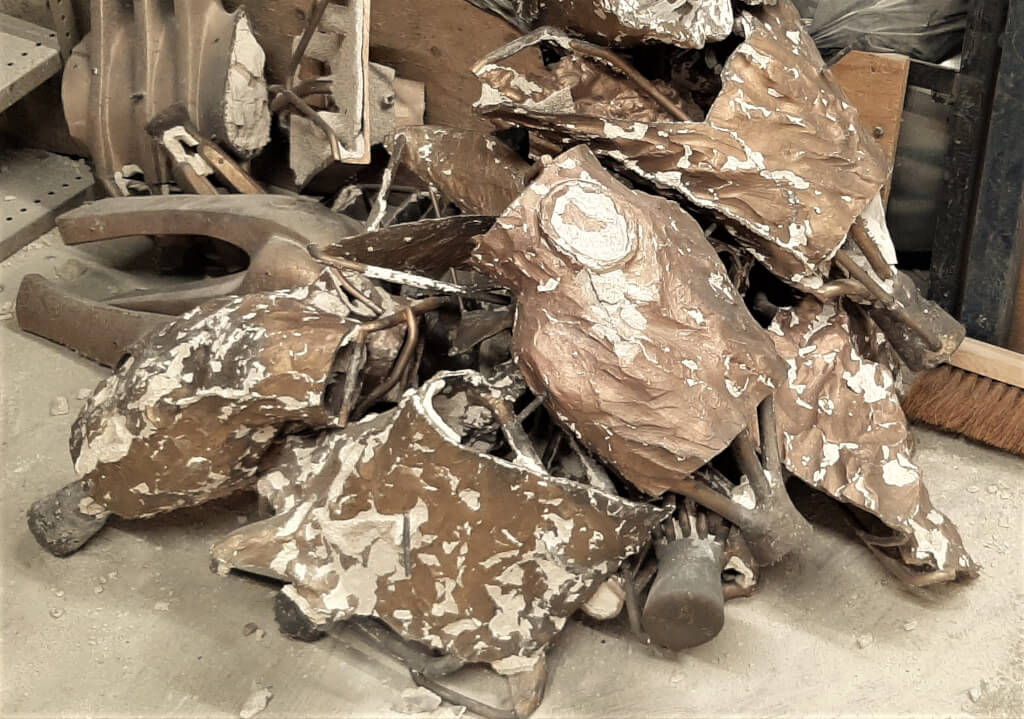
The cooled castings, having had their moulds removed and awaiting fettling.
Speak to us of Freedom – knockout
Knockout has nothing to do with boxing! It is the term given to the process of removing, or knocking out, the castings from their moulds. The photo above shows the individual castings having had the moulds removed. They still have their runners and risers, sprues and followers (all the extra bits needed inside the mould to make the metal flow) still attached though. (These are the bits that look a bit like tree roots). The next stage is to ‘fettle’ these unwanted bits of bronze off, leaving just the raw castings, albeit with some little bits of mould still attached.
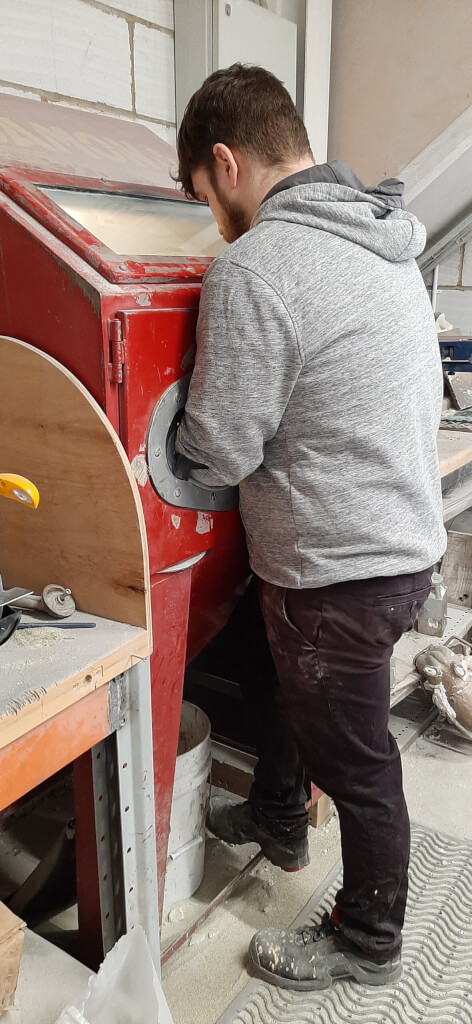
The final cleaning in the sand-blaster to remove all the last traces of mould.
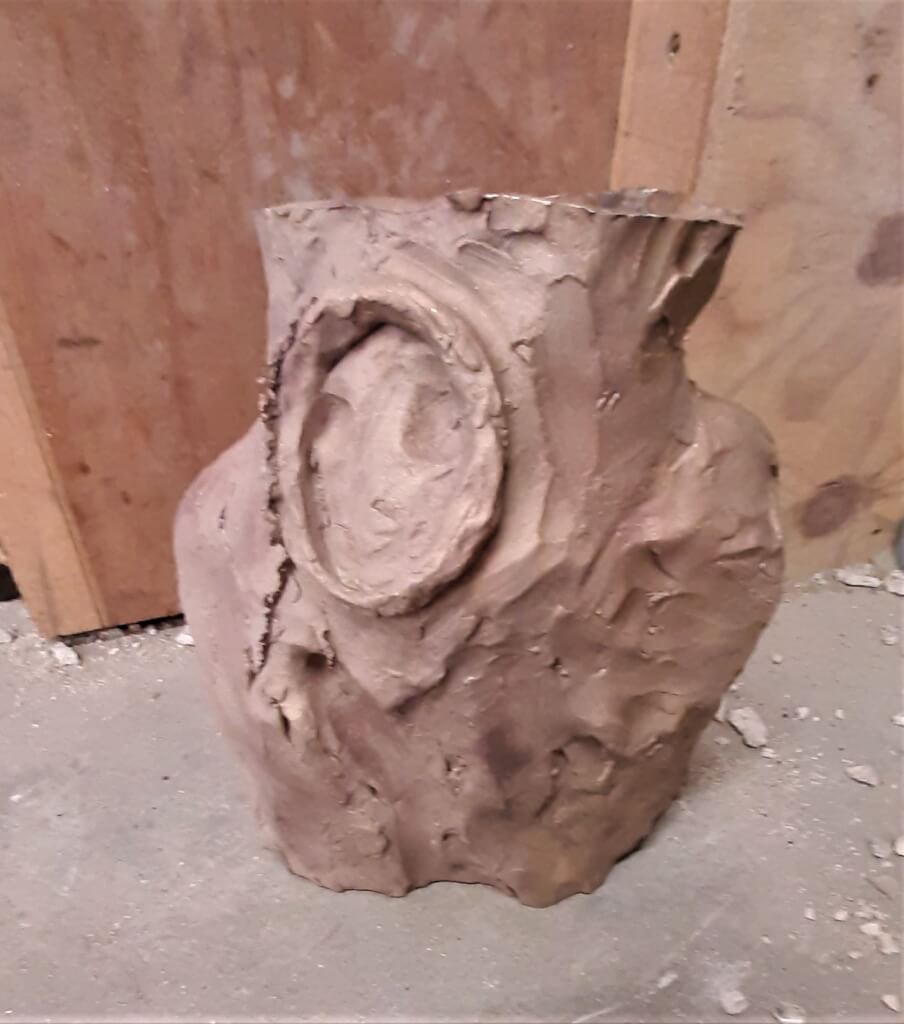
You will no doubt recognise this as the same casting from the top of the post, but now looking perfectly clean and ready for assembly.
The next step is to start assembling the individual castings.
See the finished Speak to us of Freedom sculpture here.

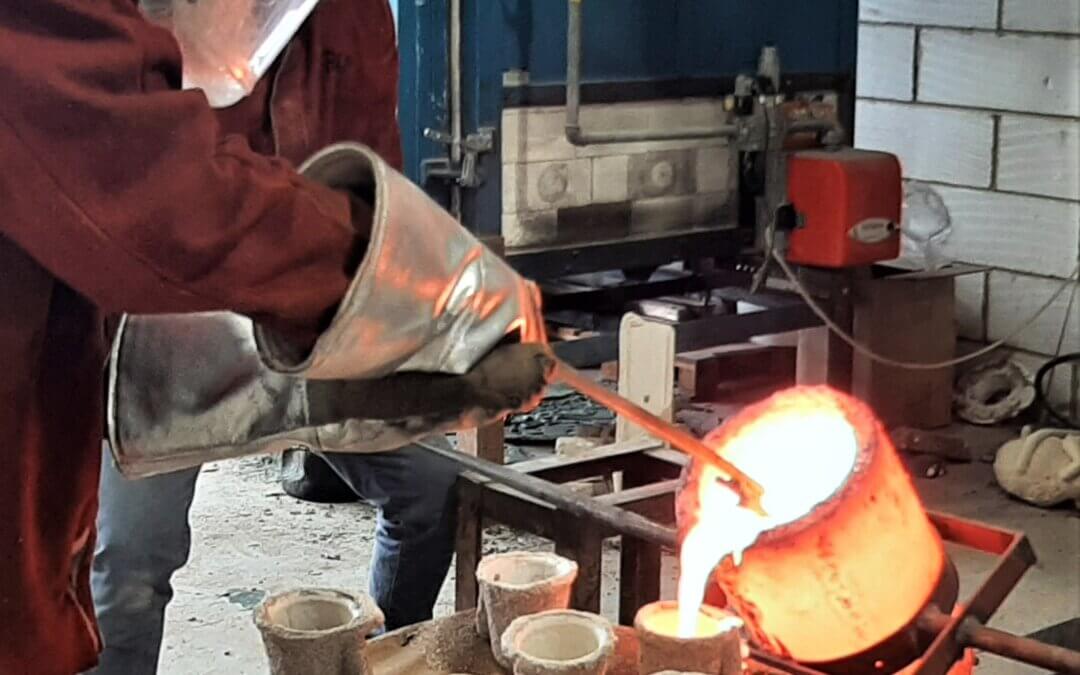
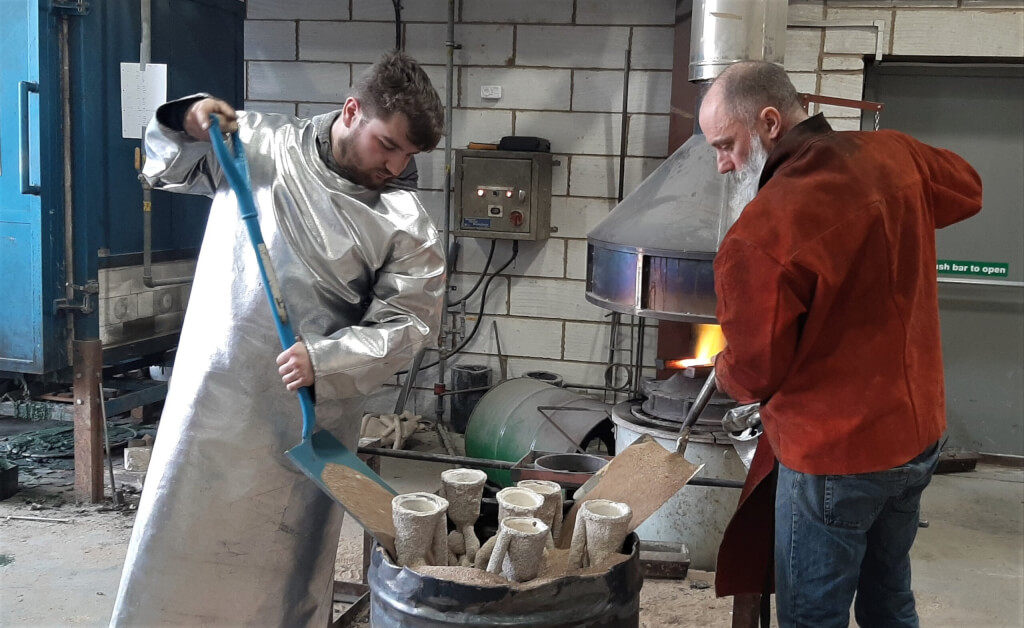
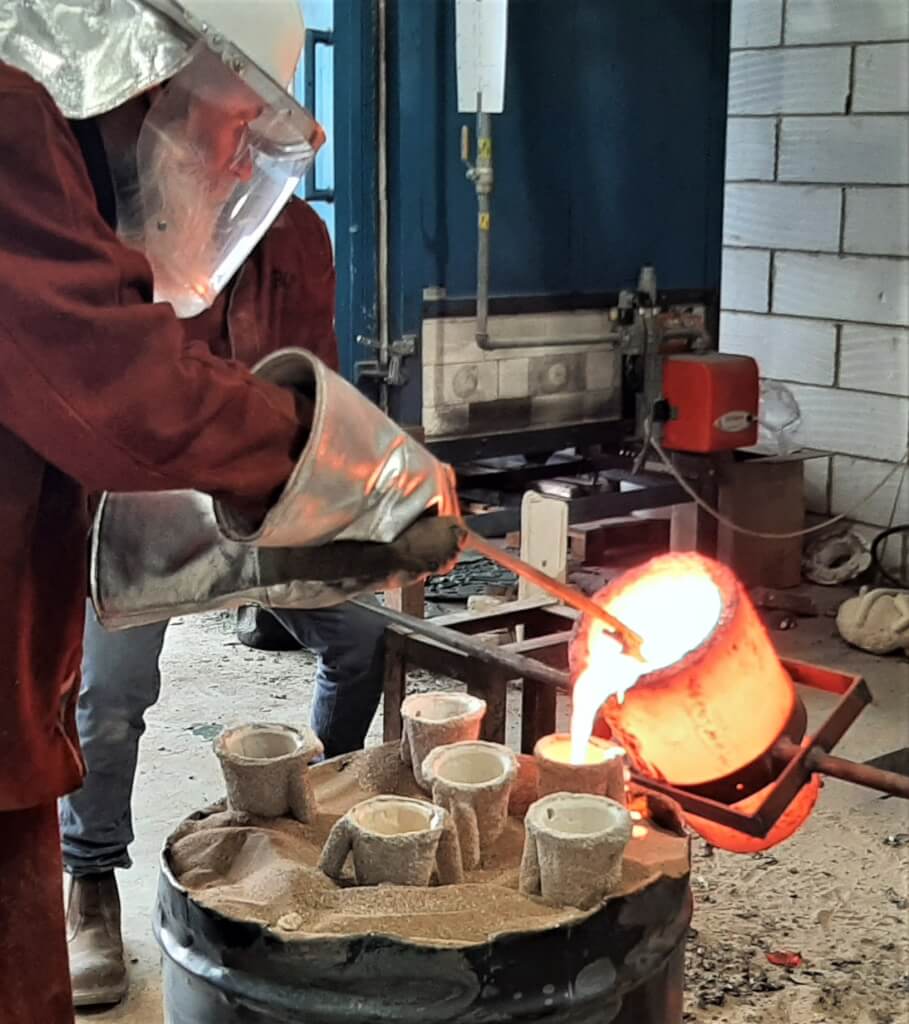
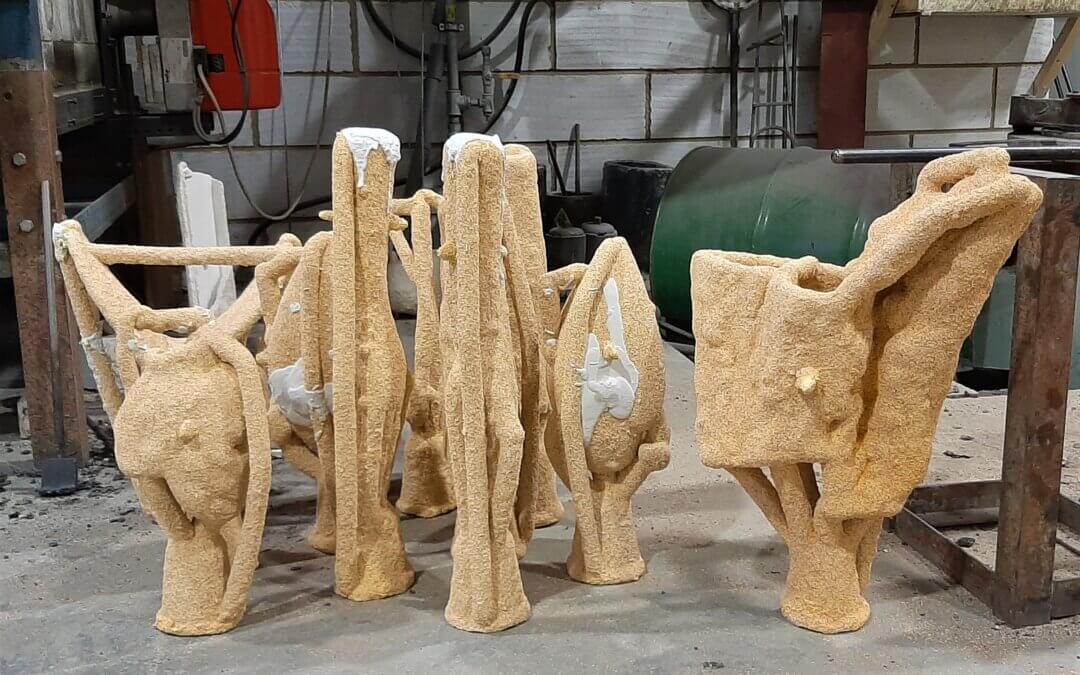
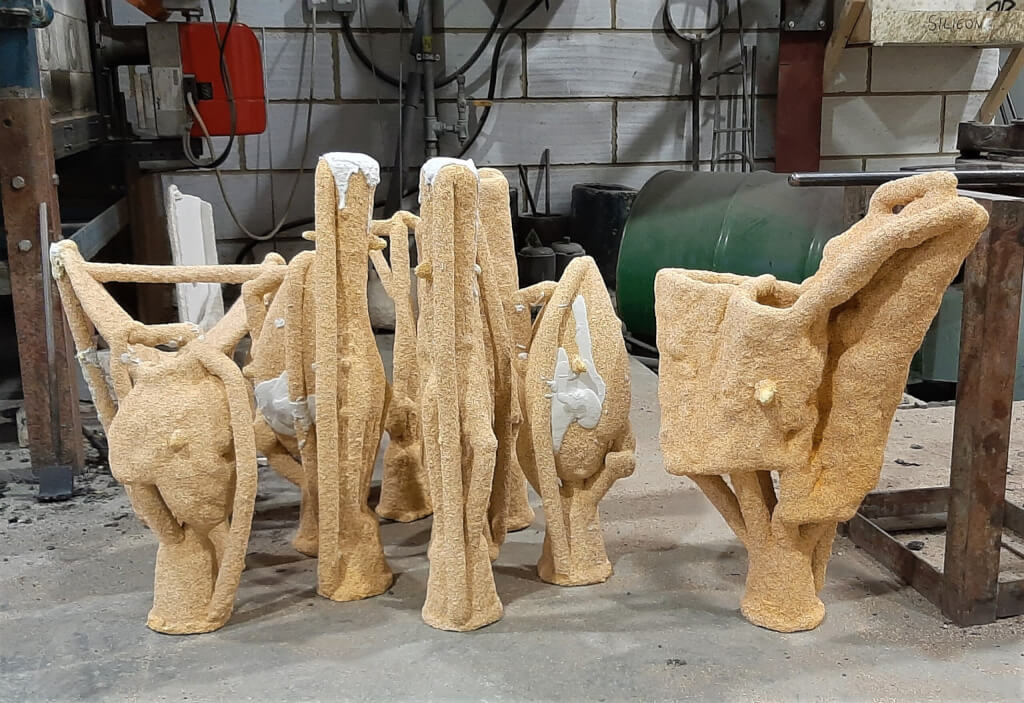
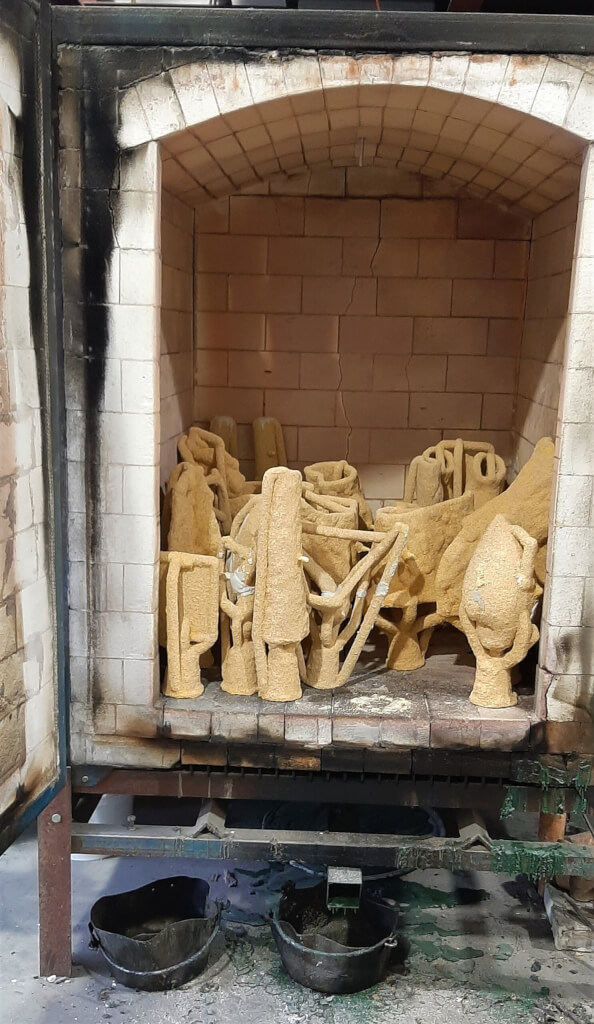
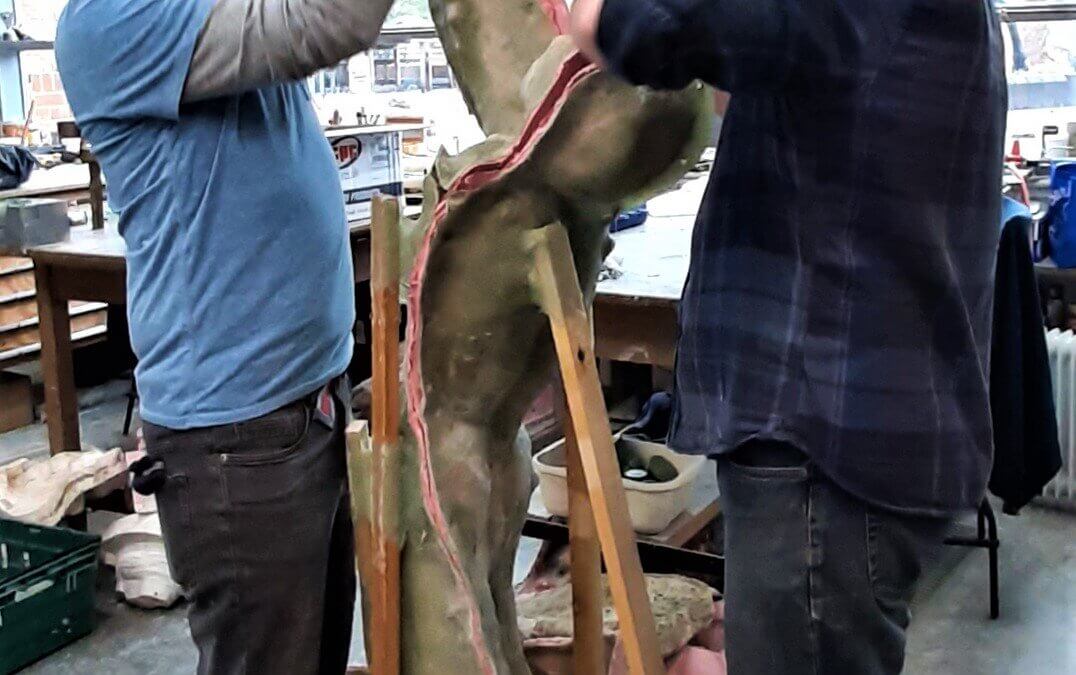
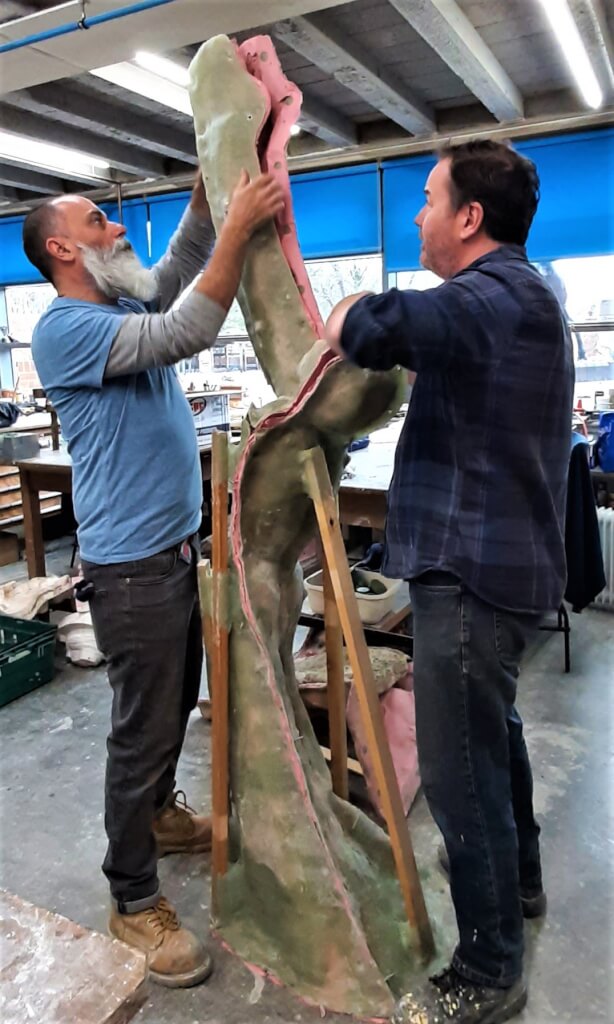

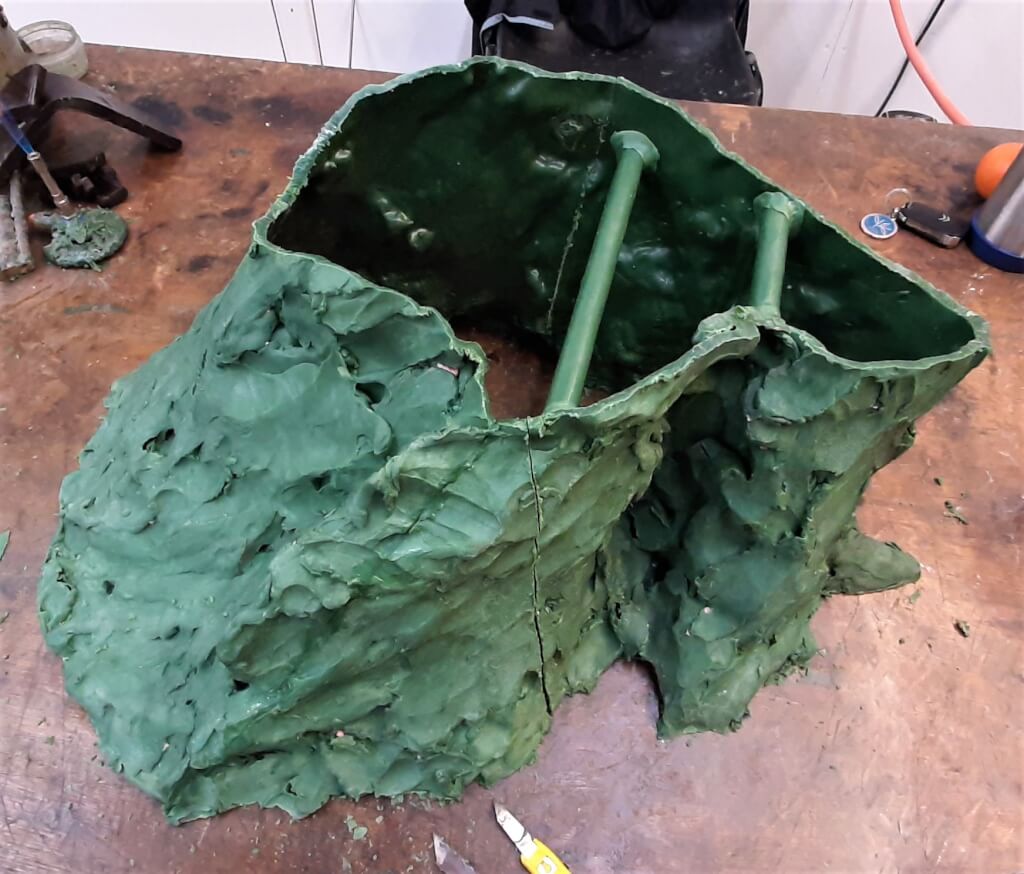
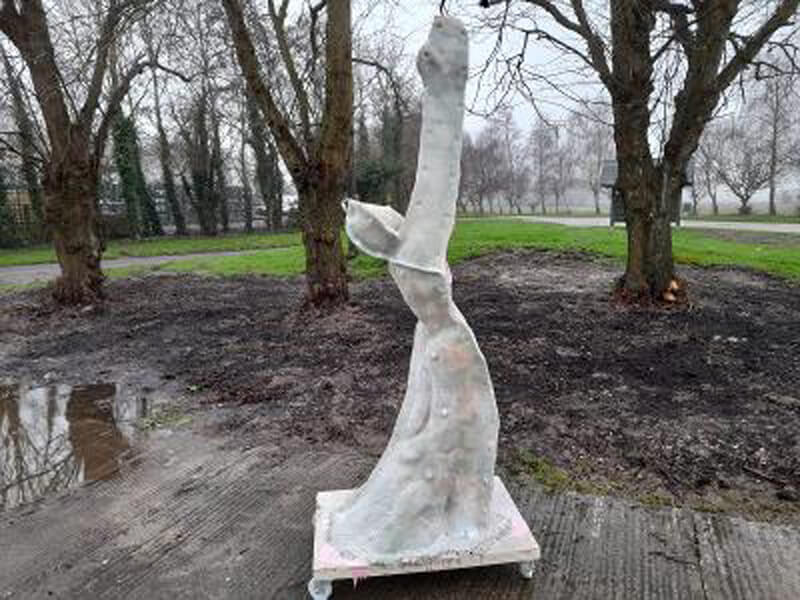
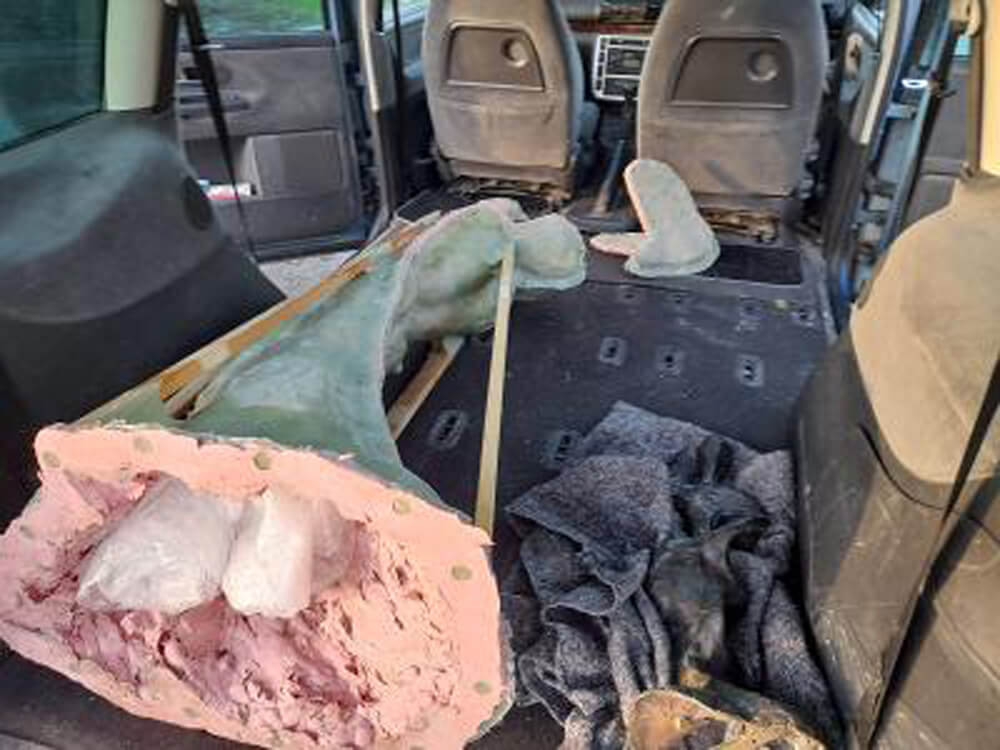
Recent Comments